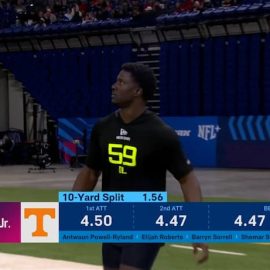Soccer has always been a sport predicated on somewhat subjective measurables; many coaches, scouts and trainers finding the majority of what they need to know from a player’s actual play on the field, rather than his respective averages and scores in a spreadsheet. Even as avid fans, our interest in things like perfect passing percentage or staggering shots-on-goal tallies are only really taken seriously if they progress/support success we’ve already witnessed in game situations anyway. Numbers seem almost auxiliary, just numerical truths regularly overshadowed and out-valued by our much more trustworthy visual assessments.
Well, it seems that mindset might be shifting in the MLS. When the 2013 season launches next spring, Adidas will team up with Major League Soccer to install a selection of stat-compiling devices in each player’s game day jersey. Through these small, kit-inserted data chips, coaches and fans alike will be able to track every single player’s sprinting speed, running distance, heart rate and power in real time. It’s almost like giving every spectator Terminator vision; an instantly-calculating electronic eye that ascertains figures, graphs and evaluations on the fly.
Without question, adding this level of analytical insight into a game that has always been so fluid and statistically-uncooperative is pretty intriguing, and I’m sure it will immediately help improve a lot of what coaches use to evaluate speed, endurance and strength capabilities in future training sessions (getting to know your players better physically will help prevent injuries, allow trainers to customize workouts, identify work rate inefficiencies, etc.), but beyond that, does this new technology really change our view of the game?
Probably not. The introduction of these measurements simply allow us to track a player’s physical performance, only quantifying/tracing a player’s athletic tools, not his actual ability to play the game of soccer. Incalculable skills like anticipation, teammate chemistry and creativity just play too large a role in a footballer’s on-field success for accurate ratings/objective player comparisons to ever really be constructed… but that’s not really the point of “smart soccer.”
It’s a revolutionary step in the sense that it allows us to understand each player’s physical capacity on an individual level. We can definitely sort out who the fastest, strongest and most enduring players in all of Major League Soccer are from these tracking chips, but what will ultimately be much more valuable is better understanding how to train each of them based on those unique physical performance reports.
It starts with smart training… and then eventually, if followed through on, becomes smart soccer.
Add Sportslens to your Google News Feed!






